 ™
™TRADITIONAL MOUNTAINEERING
™
www.TraditionalMountaineering.org
™ and also
www.AlpineMountaineering.org
™
 ™
™
FREE BASIC TO ADVANCED
ALPINE MOUNTAIN CLIMBING INSTRUCTION™
Home
| Information
| Photos
| Calendar
| News
| Seminars
| Experiences
| Questions
| Updates
| Books
| Conditions
| Links
| Search
![]()
Tomaz Humar rescued from Nanga Parbat at 24,000 feet by helicopter
August 7, 2005, on the SuperTopo bulletin board: "Tomaz Humar has been stranded at about 24,000' on Nanga Parbat's Rupal Face since Wednesday (warm humid weather.. snowing... ). They are trying to find a powerful enough helicopter to try and rescue him. Check out the updates plus the amazing amazing video from the helicopter that did go up the face".
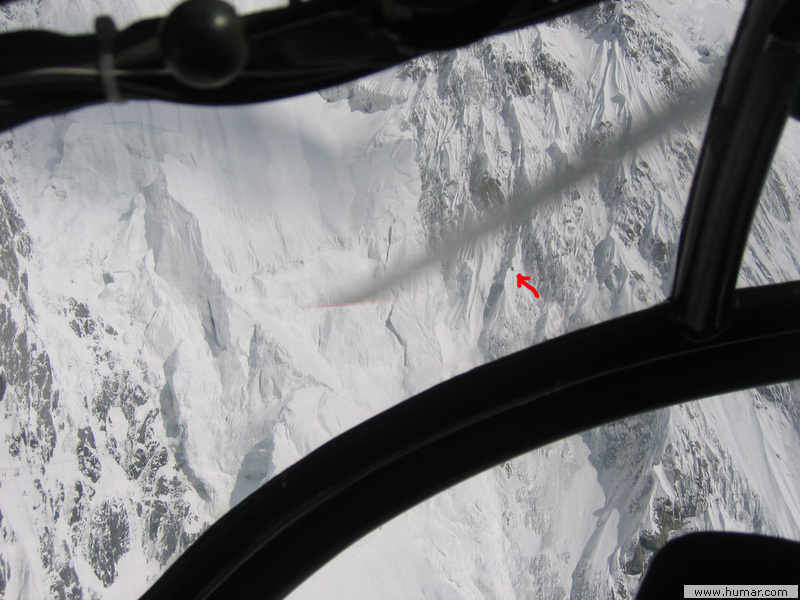
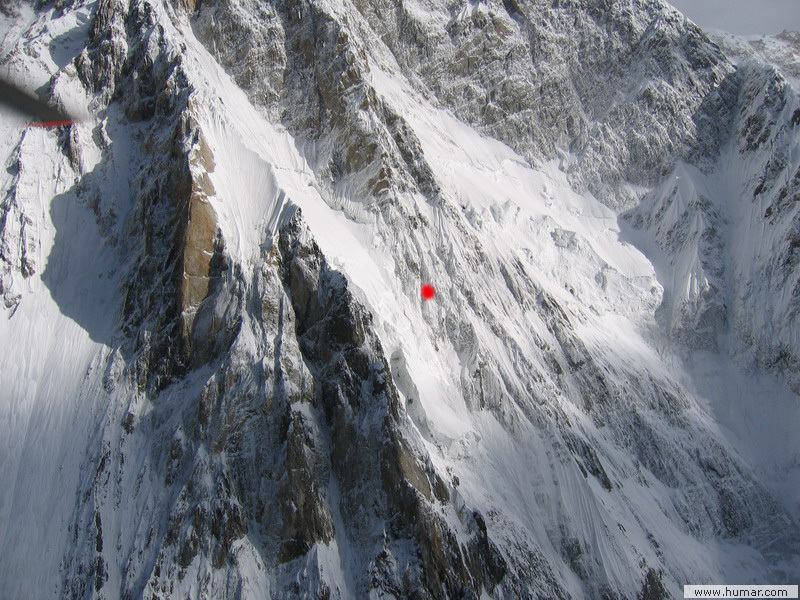
http://www.supertopo.com/climbing/thread.html?topic_id=87870
Note: Our thanks to Chris at SuperTopo for this tip! --Webmeister
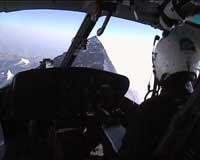
NEWS RELEASE
Helicopter lands on the top of Mount Everest
On May 14th, 2005 at 7h08 (local time), a serial Ecureuil/AStar AS 350 B3
piloted by the EUROCOPTER X-test pilot Didier Delsalle, landed at 8,850 meters
(29,035ft) on the top of the Mount Everest (Kingdom of Nepal).
This tremendous achievement breaks the World Record for the highest altitude
landing and take-off ever, which sets an ultimate milestone in the History of
Aviation.
Fabrice Brégier, President and CEO of the EUROCOPTER Group, world leading
helicopter manufacturer, immediately congratulated the pilot and his team for
this
extraordinary feat.
After taking off from its base camp Lukla on May 14th, 2005 at 2,866 meters
(9,403ft) Didier Delsalle onboard his Ecureuil AS350B3 reached the top of Mount
Everest.
As required by the Fédération Aéronautique Internationale (FAI - International
Aeronautical Federation), the aircraft remained landed on ground more than 2
minutes on the top of the world before flying back to Lukla.
This feat was renewed the day after.
Stepping out of his helicopter, Didier Delsalle commented: "To reach this
mythical summit definitively seemed to be a dream; despite the obvious
difficulties of the target to be reached, the aircraft demonstrated its
capability to cope with the situation . . ., sublimated by the magic of the
place”.
Achieved with a serial helicopter, this absolute World Record once more
contributes to underline the unique qualities of the Ecureuil/AStar AS350 B3 as
a multipurpose, reliable, quick and comfortable helicopter which emerges as the
most performing aircraft in the world in the most extreme conditions.
During the trial period, Didier Delsalle and his Ecureuil/AStar AS350 B3 flew
some rescue missions on behalf of the Nepalese authorities demonstrating the
operational capabilities of the aircraft used to set the altitude landing and
take-off World Record.
This feat has been achieved further to various flight tests begun one year ago
with the Ecureuil/AStar AS350 B3, among which:
> Experimental flight up to 8,992 meters (29,500 ft) in April 2004 in Istres
(France),
> “Time to climb” records to the heights of 3,000, 6,000 and 9,000 meters
performed on April 14th, 2005 in respectively 2 minutes 21 seconds, 5 minutes 6
seconds
and 9 minutes 26 seconds. These
records smash the previous ones held by an Ecureuil/AStar AS350 B1 with
respectively 2 minutes 59 seconds,
6 minutes 55 seconds and 13 minutes
52 seconds,
> Experimental flight up to 10.211 meters (33.500 ft) on April 14, 2005,
>Landing at the South Pass of Mount Everest at 7,925 meters (26,000 ft) on May
12th, 2005, establishing a new altitude landing and take-off record, previously
held by
a Cheetah helicopter - variant of the
Lama - at 7,670 meters (25,150 ft).
With this landing on the top of the world, EUROCOPTER demonstrates that its
technological innovations provide its products a length - height - ahead, set at
the disposal of its worldwide customers.
To date, 3,670 Ecureuil/AStar have been sold worldwide and logged 15 million
flight hours.
Since its introduction on the market, the Ecureuil/AStar/Twinstar family has
been benefiting of successive improvements among which its most powerful version
is the Ecureuil/AStar AS350 B3. This aircraft is serial equipped with modern
systems such as dual channel FADEC, Vehicule and Engine Monitoring Display,
integrated GPS, etc….
424 Ecureuil/AStar AS350 B3 are currently in operation worldwide, mainly used
for missions requiring high performances, such as aerial work (cargo sling
capacity: 1,400kg) in very high and hot conditions.
EUROCOPTER is thankful to the Nepalese government and all its departments for
their help and friendly support throughout this mission.
These world records are currently submitted to the official approval of the FAI.
Eurocopter is a wholly owned subsidiary of EADS. The worldwide leader in
aerospace, defense, and the associated services, EADS generated a turnover of
31.8 billion euros in 2004, and employed approximately 110,000 people throughout
the world. The EADS Group includes the aircraft maker Airbus, the world’s
leading helicopter manufacturer Eurocopter, and the world’s second largest
missile company, the joint venture MDBA. EADS is also the biggest partner in the
Eurofighter consortium and the lead contractor for the Ariane launcher. The
Group is also developing the A400M military transport aircraft, and is the major
industrial partner for Galileo, the European satellite-based navigation system.
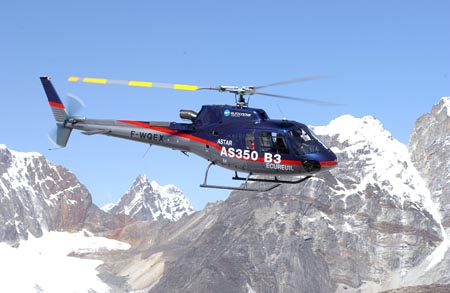
Note: I am speechless! My thanks to Eduardo Soler, Aconcagua-Experience, for this news tip. These helicopters are used on Aconcagua. --Webmeister Speik.
DENALI NATIONAL PARK 1987 MOUNTAINEERING SUMMARY
Helicopter rescues climber at 14,000 feet!
For the second year in a row a new record was set for the number
of mountaineers attempting to climb Mount McKinley. Despite the increase in
attempts, extended periods of poor weather throughout the Alaska Range resulted
in the lowest success rate since 1971.
The National Park Service conducted two, three-week expeditions
on Mount McKinley. All were on the West Buttress route. We continue to emphasize
environmentally sound expeditionary climbing and sanitation practices. In
addition, mountaineers are encouraged to conduct their own evacuations when ever
possible. During emergencies, the 14,200’ medical/rescue camp serves as a
base from which most Mount McKinley rescue operations are coordinated.
On May 3rd, 1987, a large group from the United Kingdom was descending the West
Rib on Mount McKinley. At about the 14,800’ level, one of the members slipped
and fell 800’, sustaining serious head injuries. The group’s CB radios were set
to broadcast on a frequency not monitored by basecamp, the air taxi operators or
the National Park Service. Thus, a member of the group had to ski out to
basecamp to report the accident. Word of the accident was relayed to the
Talkeetna Ranger Station at 2230 hrs of the same day. Insufficient light
remained to conduct a rescue that day, so plans were made to attempt a
helicopter hoist evacuation early on May 4th. No private helicopters with winch
capabilities were available. Assistance was requested through the Rescue
Coordination Center at Elmendorf Air Force Base. The following morning, an Air
Force C130 arrived to orbit the mountain to provide radio communications and the
Army Chinook Helicopters lowered an Air Force “PJ”, to the accident site. The
injured climber was stabilized and then hoisted from the accident site. This was
only the second hoist operation to ever be conducted on Mount McKinley.
Also in early May, an experienced team of two Yugoslavians arrived for a climb
of the West Buttress. They had been delayed several days when their luggage was
lost by their airline, and they hoped to make up their lost time by climbing
rapidly. They moved to 14,200’ in three days. The next day they began to ascend,
but one team member felt ill and returned to 14,200’ to rest while his partner
continued. The following day, the ill climber’s condition deteriorated and he
became severely ataxic. Fortunately, he was met by a NPS patrol who sledded him
down to Windy Corner where his condition improved enough for him to begin his
own descent. In the mean time, oxygen was flown via helicopter from Talkeetna
but clouds prevented direct delivery to the Yugoslavian. It was dropped to
another party who shuttled it to the Yugoslavian who was able to ski back to
basecamp without further assistance.
www.nps.gov/dena/home/mountaineering/summaryreports/MNT87.pdf
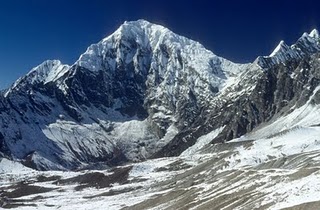
Tomaz Humar, the renown Slovenian alpinist, fell during a solo attempt on the immense unclimbed South Face of 23,711-foot Lantang Lirung in northern Nepal
The year of 2009 will go down as one of the
darkest in mountaineering history. The latest climber to die is 40-year-old
Tomaz Humar, a Slovenian alpinist who fell during a solo attempt on the immense
unclimbed South Face of 23,711-foot (7,227-meter) Lantang Lirung in northern
Nepal. Humar's body was recovered from the world's 99th highest mountain early
Saturday morning by rescuers.
Humar contacted his base support team last Monday, reporting that he had fallen
and suffered a broken leg and spinal injury. Asian Trekking's Dawa Sherpa, who
coordinated the rescue effort, detailed Humar's communications in an email to
ExplorersWeb: "On the evening of November 9th, Asian Trekking received an
emergency call from BC crew member Jagat: Tomaz had had an accident at
approximately 6,300m and requested immediate rescue... [Tuesday] at 10:00am was
also the last time Tomaz called Jagat. The conversation was very short. Tomaz
seemed to be in a very critical condition and his voice was very weak. He said:
'Jagat, this is my last!' There was no further contact with Tomaz after that."
Sherpa rescuers searched the area on Tuesday and Wednesday by both foot and air
but were unable to locate Humar, then heavy snow on Wednesday and Thursday
hampered the rescue effort because of avalanche danger. On Saturday morning his
body was spotted, although a couple thousand feet lower than expected. "He had
clearly fallen during the climb and broken his spine and leg," says Dawa Sherpa.
"He was climbing alone with no guides or porters." Humar's body was recovered by
a crack helicopter rescue crew from Air Zermatt in Switzerland.
Gerald Biner with Air Zermatt released this statement earlier today: "We just
got a call from our rescue team in Kathmandu. The rescue was made just a few
minutes ago. Pilot Robert Andenmatten and rescuer Simon Anthamatten could get
Tomaz down from Langthang Lirung. Unfortunately Tomaz did not survive. All our
thoughts are with his family and friends. Tomaz was found at 5600 meters on the
south wall. Robert decided to use 25 meters of static rope to bring Simon to the
accident site. Robert, who was with a Nepali captain, first flew Tomaz to
basecamp and went up again to get Simon. Tomaz was further down then expected
and had a broken leg. Our team is not sure if he had fallen further up the
wall."
This is not the first time that Tomaz Humar had to be rescued from a high peak.
In 2005 he attempted a solo ascent of the Rupal Face on Nanga Parbat, the
ninth-highest mountain in the world, in Pakistan. Humar was plucked from the
face in a daring helicopter rescue after four days on a snowy ledge at 19,600
feet high on the mountain. The two Pakistani army pilots who saved him were
awarded with Slovenia's highest military honor for bravery.
Humar was probably the greatest active mountaineer in the world today. He
emulated Reinhold Messner's tactics of climbing fast and light in a pure alpine
style, carrying no oxygen and only basic equipment. He first gained notoriety
after his 1999 solo ascent of the South Face of Dhaulagiri. In 2007 he soloed
the South Face of Annapurna.
Tomaz Humar's website outlines the creed he lived by: "He was never a man of
rules. He decided very early on in his life that his story with the mountains
would be his alone and that his journeys would be set by nobody but himself. He
denounced classical Himalayan expeditions where one has to follow the rules of a
leader and became the master of his own destiny."
Humar also wrote: "Every mountain has its soul. If the mountain doesn't
accept you and you don't submit to her will, she will ruin you." Now Lantang
Lirung owns his soul. Tomaz, climb in peace among your beloved mountains.
http://climbing.about.com/b/2009/11/14/alpinist-tomaz-humar-dies-on-nepalese-peak.htm
![]()
Read more . . .
Mazamas
Sierra club, Angeles Chapter
American Alpine Club
Oregon Section of the AAC
Accidents in North American Mountaineering
About Alpine Mountaineering:
The Sport of Alpine Mountaineering
Climbing Together
Following the Leader
The Mountaineers' Rope
Basic Responsibilities
![]() Cuatro Responsabiliades Basicas de Quienes Salen al Campo
Cuatro Responsabiliades Basicas de Quienes Salen al Campo
The Ten Essentials
![]() Los Diez Sistemas Esenciales
Los Diez Sistemas Esenciales
Our Leader's Guidelines:
Our Volunteer Leader Guidelines
Sign-in Agreements, Waivers and Prospectus
This pdf form will need to be signed by you at the trail head
Sample Prospectus
Make sure every leader tells you what the group is going to do; print a copy for your "responsible person"
Participant Information Form
This pdf form can be printed and mailed or handed to the Leader - if requested or required
Emergency and Incident Report Form
Copy and print this form. Carry two copies with your Essentials
![]()
Participant and Group First Aid Kit
Print this form. Make up your own first aid essentials (kits)
![]()
Alpine climbing on snow and ice:
European helicopter lands on Mount Everest's summit!
Bend based Mountain Link's JJ Justman team climbing Everest!
![]()
How long is the traditional alpine mountaineering ice axe?
What about climbing Mt. Hood?
Is alpine mountaineering the root of the many sports of climbing?
What should I know about travel over hard snow and ice?
How can I learn to self belay and ice axe arrest?
6 pdf pages ![]()
What should I know about climbing Aconcagua?
![]() Search this site!
Search this site!
Copy and paste these search suggestions:
"Light and fast alpine climbing with Midge Cross"
"Accidents in North American Mountaineering"
"Avalanche on North Sister"